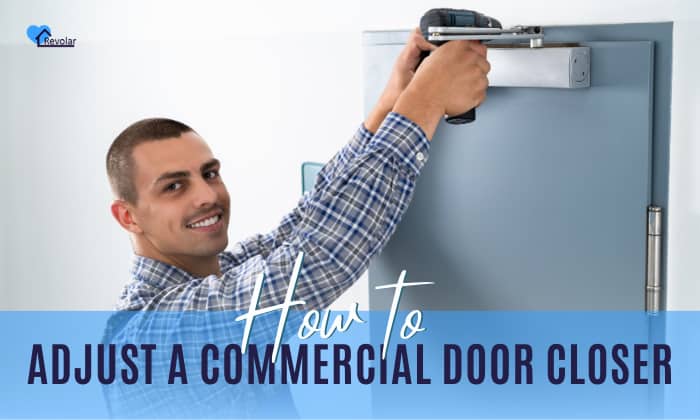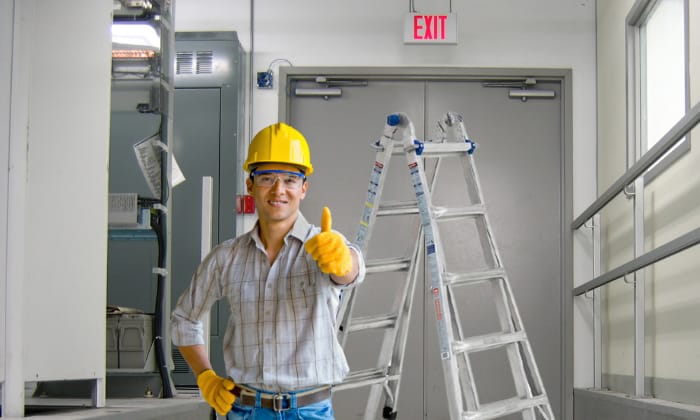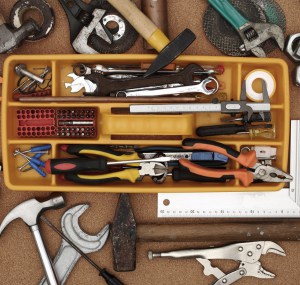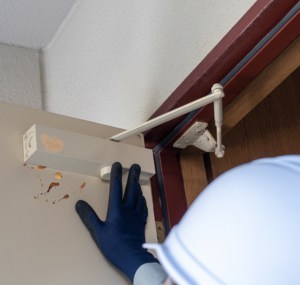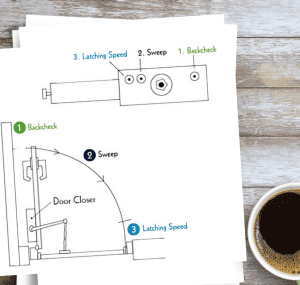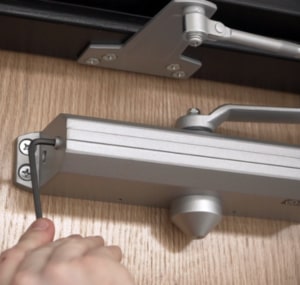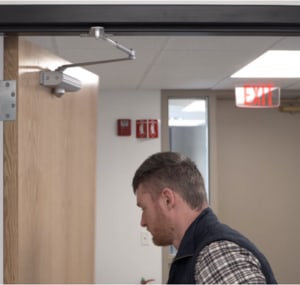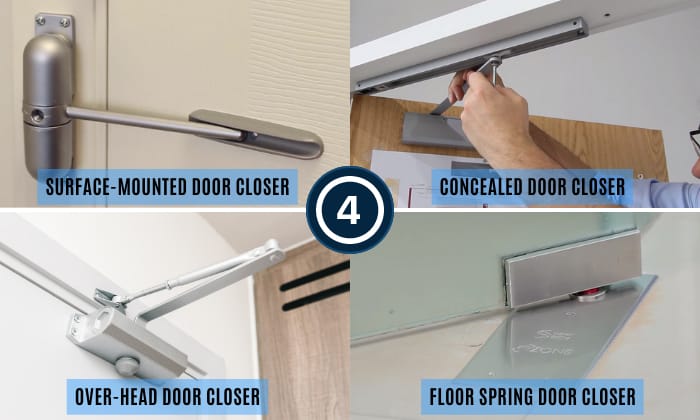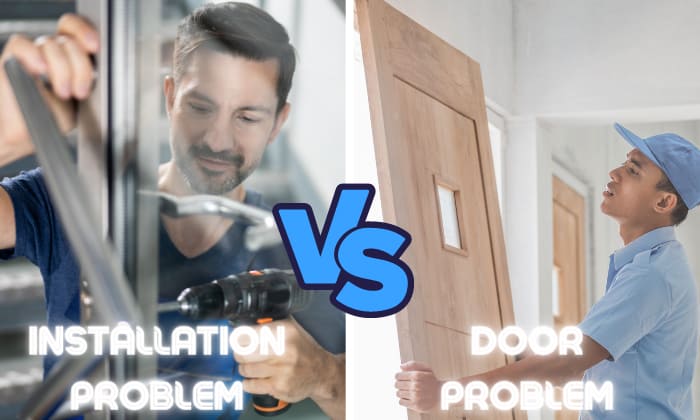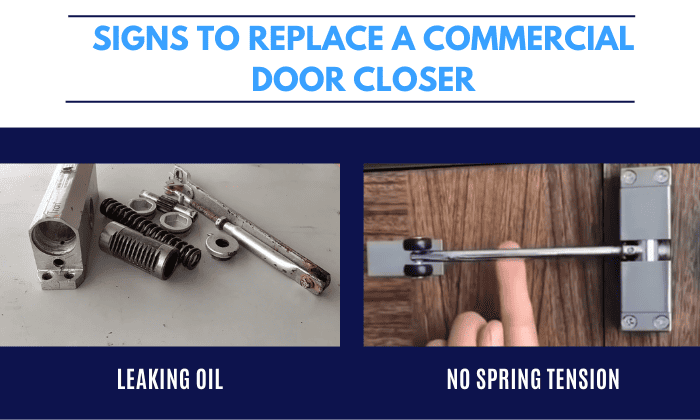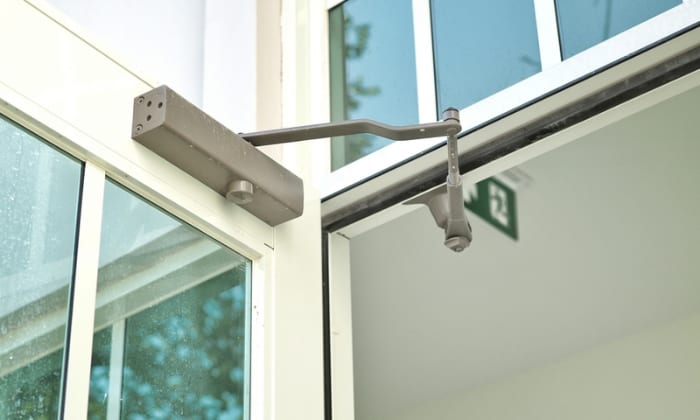Have you noticed that your office door seems to take forever to close or it slams shut all the time? If that’s the case then something may be wrong with your commercial door closer.
Fortunately, fixing it is something that you can do on your own. Yes, you don’t need to have special skills to fine-tune your door closer.
So, keep reading to learn how to adjust a commercial door closer, how to troubleshoot it, and when to know when to replace it.
Table of Contents
Step-by-step Guide to Adjust a Commercial Door Closer
Before we proceed with the actual steps in adjusting door closer, it’s important that you’re familiar with its different adjustment valves.
Please refer to the picture below for reference so you can easily follow the instructions.
What to prepare
You don’t need all of the following tools as it will depend on the type of valves or screws your door closer has.
- Screwdriver
- Small Wrench
- Hex Key
Step 1: Inspect if there’s signs of oil leak
Carefully inspect if your door closer is intact or if there is a slight oil leak. If it looks fine, with no signs of damage or oils, you can start adjusting it.
Step 2: Locate the adjustment screws
In the diagram above, you would see the three adjustment valves or screws (backcheck, sweep, and latching speed.) Check your door closer and locate these three screws.
If you can’t find them, you might need to remove the cover on your door closer.
You can pull the cover to remove it or if you see some fasteners just loosen them using any of the appropriate tools above.
Once the fasteners are loose, you can remove the cover and find the adjustment screws. Gently turn the screws clockwise to close them or until you cannot turn the screws.
Step 3: Fine-tune the adjustment valves or screws
- Sweep – The sweep valve helps control the closing speed of the door. Adjust door closer speed by turning the sweep valve to 1.5 to 2 full turns counterclockwise.
If the close speed is too fast, try turning the sweep valve clockwise to slow it down.
- Latching Speed – You should consider the location of your door when it comes to latching speed door closer adjustment.
If you’re adjusting an outside door, increasing the latch speed would be better
for safety purposes. If it’s an office or inside door, it’s best to slow down the
latching speed.
Turning the latch valve counterclockwise will decrease the latching speed and
turning it clockwise will increase it. For this adjustment, a 1.5 to 2 turns would do the job.
- Backcheck – Turn the backcheck screw counterclockwise to at least 1.25 to 1.5 turns. Open the door and check if it will slowly shut down and won’t hit the wall behind it.
Step 4: Inspect the adjusted door closer
Now that you’ve adjusted the valves, try opening and closing the door several times. Check if the closing and latching speed is correct and if it doesn’t slam or hit the surface behind.
Adjust the valves little by little until you get the desired setting. You might want to test your door at least 10 times to ensure that you have adjusted it correctly.
Types of Door Closers
A door closer can either be manual or automatic. An automatic door closer will automatically open a door using a device or pushing a button. It will also close on its own using a proximity detector.
On the other hand, A manual door closer uses a compression or torsion spring that allows the door to close on its own when opened.
Below are some of the different types of door closers.
- Surface-Mounted Door Closer
A surface-mounted door closer is usually placed in the door frame or on the door’s surface. This type of door closer is usually small and can be installed easily. It can also be stylish as you can match it with your door’s color.
- Concealed Door Closer
As the name suggests, a concealed door closer is hidden or invisible. It is mostly used indoors since it’s lightweight and for aesthetic purposes as well.
- Over-Head Door Closer
An overhead door closer is commonly used on inside doors and it has three types. These are Parallel Arm, Regular Arm, and Top Jamb.
- Floor Spring Door Closer
A floor spring door closer is the opposite of the overhead door closer since it is installed or affixed on the floor. It also has a setting to allow the door to stay open.
Troubleshooting Commercial Door Closer
There are many reasons why your door closers may not be working correctly. But it doesn’t always mean that you need to replace them. Sometimes, a simple adjustment may not do the trick.
- Check if it’s properly installed
After adjusting the door closer and it still doesn’t close the right way, check if it is properly installed. You can check it yourself or have it inspected by a professional if you’re unsure.
- Inspect your door
Sometimes the problem may be with the door itself rather than with your door closer. If your door is out of shape or warped due to dampness or heat, it may cause issues with the opening and closing of your door.
If you suspect your door is damaged, call a professional to check and repair it.
Signs That It’s Time to Replace a Commercial Door Closer
If you think that you’ve done everything to adjust your door closer but your door still can’t seem to stop slamming or is still not closing all the way, then it’s time to replace it.
Other signs to look for are the following:
- Leaking oil in the body or cover of your door closer.
- No spring tension even after you try to adjust tension on door closer.
If you experience any of these signs, it means your door closer is broken and no amount of adjustments can fix it.
Frequently Asked Questions
What is the average lifespan of a commercial door closer?
A commercial door closer can last up to 30 years to a lifetime provided that the installation is done right. Furthermore, you can maintain this product’s life if you adjust it correctly without slamming or putting too much pressure on it.
How often should I adjust my commercial door closer?
You should adjust your door closer when necessary and as part of your regular maintenance. This includes life safety, security, and as part of ADA requirements.
Can I adjust a hydraulic door closer by myself, or do I need a professional?
You don’t really need a professional to adjust a hydraulic door closer. As long as you have the right tools and follow the step-by-step guide above, you can do it yourself.
Conclusion
Learning how to adjust a commercial door closer and troubleshoot it makes it easier to find out the real issues of your door closers.
Now you don’t have to worry about slamming or hard to open doors. When installing door closers, make sure to choose the correct type for your doors.
It also pays to purchase from trusted brands such as Fortstrong, Hager, and Briton door closer to ensure high-quality products.
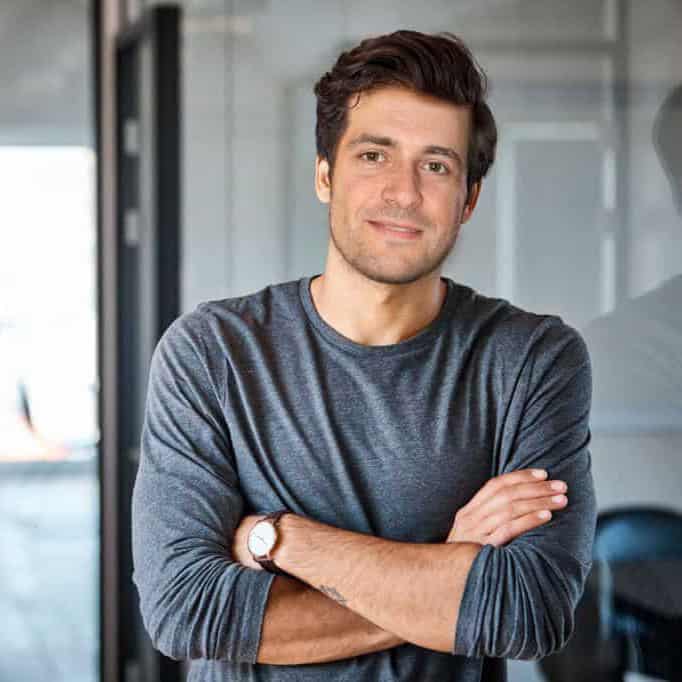
I am the last member to join Revolar and might be just the luckiest to work with dedicated people like Teddy and John. Our team has established a process where my only job is writing the best content to deliver incredible ideas and guides.


